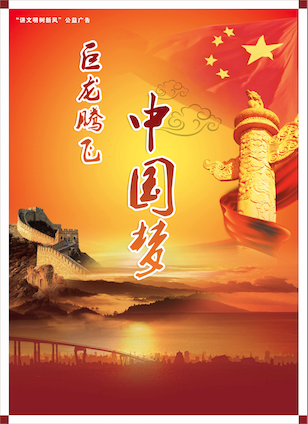If the 20th century was "The American Century," then plenty of commentators have announced that the 21st century will belong to China. And just as the American Century was built around the myth of the "American Dream," Chinese Communist Party General Secretary Xi Jinping has offered Chinese people the "China Dream." But as China expert Kirk Denton explores this month, the China Dream is not just a vision for the future, but a thorough re-writing of the Chinese past.
For more on East Asia, read Origins on: China and Africa; Remembering Tiananmen; Taiwan’s Politics; Japanese Nuclear Power; and North Korea.
The China Dream
On November 29, 2012, newly appointed General Secretary of the Chinese Communist Party (CCP) Xi Jinping gave a speech that would become a signature moment in his young leadership.
Later known as his “China Dream” speech, it proposed that the fulfillment of the dreams of individual citizens is bound to China’s development as a nation, and that personal dreams will be realized only through the revival of the Chinese people as a whole.
In an oft-quoted sentence from a later version of the China Dream speech, Xi said: “China Dream means the dream of a people, and it is also the dreams of each Chinese person.”
Although the term had already entered popular use before Xi’s speech, “China Dream” has since become a lynchpin in Xi’s ideological platform. On November 30, the official party organ, People’s Daily, printed a laudatory editorial and excerpts.
Bit by bit, “China Dream” has come to saturate the mass media in China: propaganda posters like the one pictured here have popped up everywhere on the streets of Chinese cities and on the Internet to echo Xi’s speech; a “My China Dream” university student conference was held in August of 2013; “The Sounds of China Dream,” a new American Idol–style singing competition, can be heard on Dragon TV; and state-sponsored websites devoted to the China Dream litter the Internet. The official Chinese Writers Association sponsors an online collection of songs and poems dedicated to the China Dream.
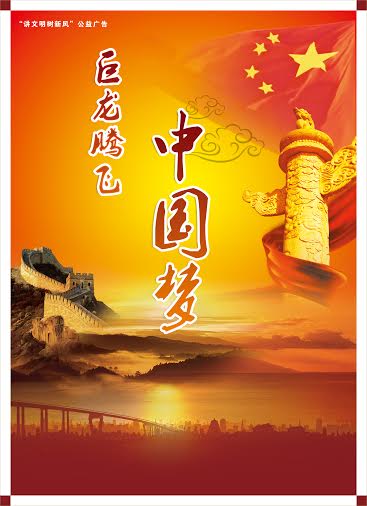 |
| Figure above, one of many China Dream publicity posters. The text reads: "China Dream, Great Dragon Soars." |
From Mao Zedong to Xi Jinping, China has transformed dramatically from a socialist planned economy to an economy that is effectively capitalist, though official rhetoric calls it “socialism with Chinese characteristics” or the “socialist market economy.”
Some have likened the new Chinese economy to Western “neoliberal” economies with their deregulation, free trade, marketization, privatization, free flow of global capital, and commodification. Whatever one labels them, these economic changes have been liberating for some Chinese, traumatic for others.
The China Dream has emerged at a time when, as a consequence of these reforms, the state exerts far less influence on the daily lives of people than at any time in the history of the People’s Republic of China (PRC).
Most visibly on the Internet, Chinese now express new forms of social identity and social interaction that would have been unthinkable in the rigid moralistic climate of Mao-era collectivism. They also enunciate a broad range of sentiments toward the government and its economic program—from outright contempt, to cynicism, to gratitude.
Chinese Dreams and The National Museum
What is sometimes overlooked in discussions of “China Dream” is the context in which Xi gave the original speech—the National Museum of China.
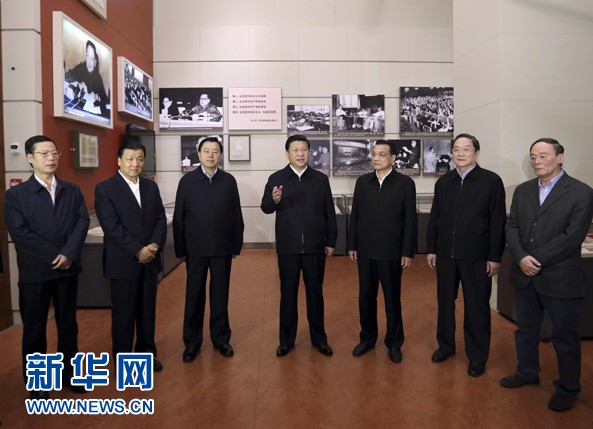
Xi gave the speech moments after touring Road to Revival, the museum’s exhibit dedicated to the history of China from the Opium War (1839–42) to the present. Situated on Beijing’s Tiananmen Square in the political heart of China—a stone’s throw from both Mao’s corpse, preserved under glass in a mausoleum, and the Imperial Palace—the museum is the most official of official spaces for presenting Party views of the past.
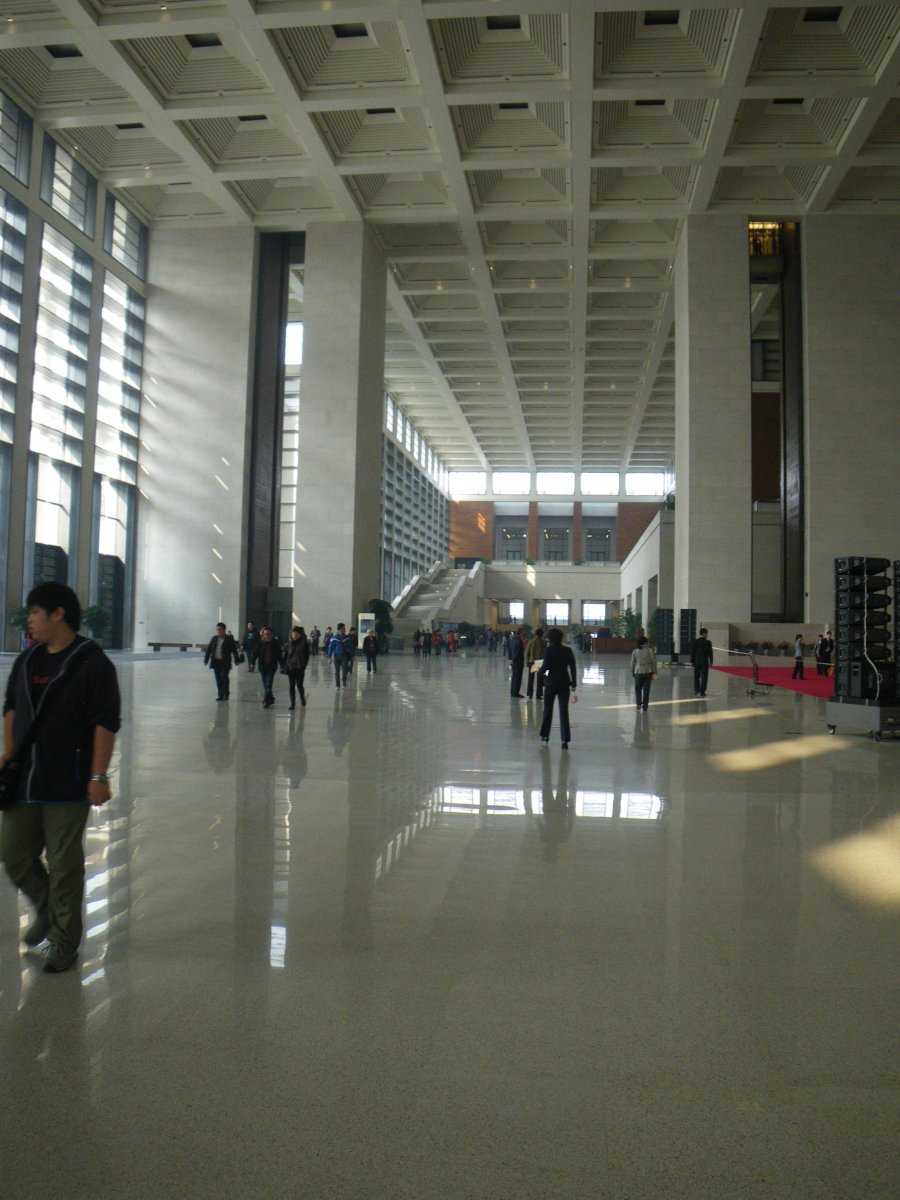
The National Museum of China was born in 2003, an amalgamation of two earlier museums—the Museum of Chinese History and the Museum of the Chinese Revolution—that first opened in 1961. Beginning in 2003, the museum went through a drawn-out renovation, finally reopening to much media fanfare in the fall of 2011.
Designed by a German architectural firm with a mandate to leave the Tiananmen Square façade intact, the renovation dramatically enlarged, modernized, and monumentalized the interior space of the building. Administrators aimed to transform the museum into a “world-class” cultural institution on par with the great national museums of Europe and the United States.
As a site signifying both China’s past and its aspirations to “join the world,” the new museum offered a perfect location for Xi to assert his vision of China’s dream for the future.
Standing in front of a display devoted to Deng Xiaoping and the economic reform program he initiated in the 1980s, Xi said:
Addressing both the public at large and his 80 million fellow Communists, Xi explicitly tied the present capitalist development of China with its former backwardness and “humiliation” by foreign imperialist powers such as Britain and Japan.
That past is at once a heavy burden, he suggests, and a tempering process that led inexorably to the wealth and power of the present and the promise of the future.
China’s “Road to Revival”
With the newly renovated, “world-class” National Museum of China came expectations for a fresh historical narrative, one that might expand the scope of what had constituted modern history.
The first modern history exhibit mounted in the predecessor to the National Museum of China in the early 1960s focused narrowly on the role of the CCP.
However, since the post-Mao reforms of the 1980s, the exhibit underwent numerous revisions that gradually broadened its focus to include, for instance, facets of intellectual, economic, and social history that were not directly tied to the Party or its military exploits.
As is typical of exhibits in Chinese history museums, Road to Revival tells a neat story with a strong narrative line, one that continues to be centered on the role of the CCP and hinges on its particular vision of the past. As the introductory placard puts it, the exhibit showcases:
The placard goes on to report that the exhibit demonstrates the “historical course” of “Marxism, the CCP, the socialist road, and the reform and opening up policy.” It ends with a line echoed by Xi Jinping in his “China Dream” speech: “the long-cherished dream and aspiration of the Chinese people will surely come to reality.”
The story is told in five “chapters.”
It begins with imperialism, in particular the Opium War and the “large scale expansion and plundering” (as a placard puts it) by Western powers in China. It then recounts the revolutions of the first half of the twentieth century—first the Xinhai Revolution that overthrew the Qing dynasty in 1911 and then the CCP-led revolution that defeated the Nationalists and established the PRC in 1949.
The “Founding of the People’s Republic” exhibit in Road to Revival. Photo by Kirk Denton, Nov. 2011.
It proceeds to a chapter on “constructing a new socialist China,” and ends with an overview of the current rise of China since the implementation of Deng Xiaoping’s reform program after Mao’s death.
The narrative is thus one of decline in the face of imperialist domination, and then revival, first in the form of a Marxist revolution led by Mao and then in the form of “socialism with Chinese characteristics” engineered by Deng.
The first part of this tale is a familiar one that can be traced back to Mao himself and could be found in endless iterations in museum exhibits and school textbooks of the Mao era.
But there are some significant changes from earlier Mao-era narratives, changes that reflect the growing disconnect between Mao-era leftism and the postsocialist, neoliberal reality of China today.
Most significant is an exhibit on the history of “contemporary” China. Chinese Marxist historiographers have long made a distinction between “modern” history—the period from the Opium War to the founding of the PRC—and “contemporary” history, which refers to the period of CCP rule after 1949.
The Museum of the Chinese Revolution had, since its inception in the 1950s, intended to include in its exhibits a section on contemporary history. But that history proved simply too sensitive to treat in such a permanent institutional form as a museum—and this was increasingly true as China went through the great famine of the early 1960s and the Cultural Revolution (1966–76).
The reopening in 2011 was the first time in the nearly sixty-year history of the museum that it successfully mounted a public exhibit on contemporary history treating CCP rule, including the Mao era.
In Road to Revival, present-day capitalist China becomes the new endpoint of the national narrative. Therefore, the past must be retooled in such a way as to provide a trajectory for this new endpoint.
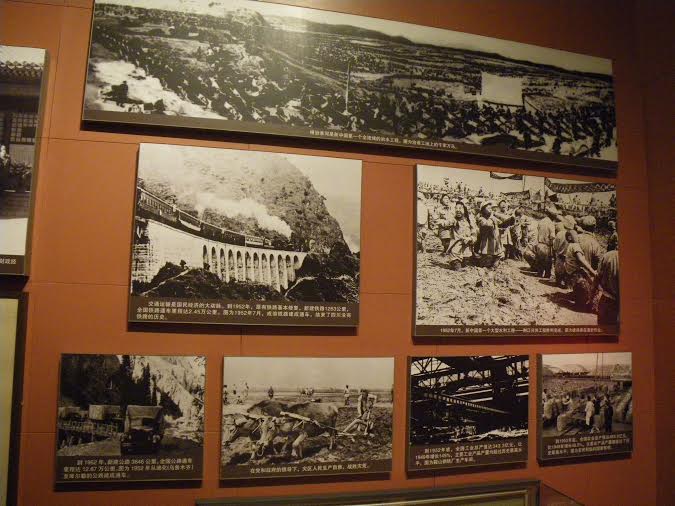
Mao-era modernization exhibit in Road to Revival. Photo by Kirk Denton, Nov. 2011.
For example, modernization and capitalist development under the Nationalists, with whom the Communists were engaged in civil conflict throughout much of the Republican era (1911–49), are viewed positively—a historical stepping stone to the full-fledged modernization of the reform and opening-up period.
We see this development in other exhibitionary contexts in the PRC that display a happy nostalgia for the cosmopolitanism, cultural modernity, and incipient capitalism of Republican China. This revisionism reshapes the Republican era into a historical foundation for the market economy of the present.
This conciliatory attitude toward the Nationalists and their contribution to modernization (not to mention to resistance against the Japanese during World War II) contrasts with the demonization and vilification of Mao-era narratives.
The most difficult task facing the curators was how to represent the Mao era in light of the dramatic economic reforms that have led the PRC so far from its socialist origins. How to create a sense of historical continuity between the Maoist past (with its agricultural collectivization, mass movements, and class struggle) and the present (with its entrepreneurship, marketization, globalization, fast-paced development, and capitalism)?
Not surprisingly, the violence and trauma of the Maoist past are completely whitewashed: the exhibit includes no mass executions of landlords, no devastating famine, no political and intellectual persecution, no Red Guards, and no party factionalism.
This remembering is built on selective forgetting of key facets of the Maoist past, especially the Cultural Revolution. Despite assurances given me by museum curators when the new exhibit was being developed in the early 2000s that the Cultural Revolution would be treated forthrightly, it gets barely a mention in Road to Revival.
The very legitimacy of the Deng regime, when it came to power after Mao’s death, was built around an anti-Cultural Revolution platform: in contrast to the fanatical leftism of the Cultural Revolution, the new regime would be rational, scientific, pragmatic, humanist, tolerant, and upright.
Although there have been calls from intellectuals to confront the devastation of the Cultural Revolution and even to portray it in an official state museum in Beijing, the CCP has preferred an aura of silence around it, not to mention around the anti-Rightist campaign (1957–58) and the great famine of the early 1960s.
Drawing attention to these facets of its history would undermine the authority of the Party, which continues to seek legitimacy from its socialist past.
The word “exploration” recurs in the displays covering the history of the Mao era, perhaps implying that the Party was groping for the right path, which it finally found when Deng came to power.
Highlighting the trauma of the socialist past—even if couched in the language of censure—could prompt visitors to the exhibit today to reflect on the injustice and oppression in present-day China.
Fear that a critical analysis of the past will lead to overt criticism of CCP policies today is why the history of class struggle in the Mao era has been silenced in this exhibit and in Party rhetoric more widely.
In Road to Revival, Mao is refashioned from a radical leftist into a modernizer whose policies in the 1950s laid the foundation for the explosive development of the Deng era.
So the Great Leap Forward, which in other contexts calls to mind the establishment of people’s communes and the backyard furnace movement, is portrayed as a time of massive public works projects, including dams, canals, and bridges, as well as the building of ships and factories.
This Maoist modernization resonates with the grand architectural and infrastructure projects that have made China today the envy of the developed world, and a ripe plum for global architectural firms.
The general idea the exhibit conveys is that today’s “socialist market economy” would not have been possible without Mao-era “socialist construction.” The exhibit makes this link explicit in a placard explaining that in the 1950s the CCP clearly set forth the great goal of achieving the “four modernizations,” a program that Zhou Enlai first proposed in 1963 but that was not fully launched until the 1980s under Deng.
Perhaps more disturbing is that the post-Mao period—the period of “reform and opening up” when Deng dismantled the very core of the Maoist economic system (e.g., people’s communes and the centrally planned economy)—is whitewashed of its trauma and turmoil.
There are no bumps on this “road to revival.”
The reform and opening up is a triumphant tale of China’s modernization, its rise in the world, and the “great revival of the Chinese people.” No displays or placards shed light on the darker side of this modernization: economic inequality, unequal regional development, pollution, corruption, illegal land grabs, and “mass incidents,” an umbrella term for various forms of civil unrest and protest that are common in both rural and urban China.
It is precisely the existence of these problems in China’s lived reality today that requires the suppression of the “class struggle” of the socialist past, for fear that such ideas could be turned against the neoliberal state itself.
It goes without saying that the exhibit erases any memory of the Tiananmen massacre of early June 1989, the twenty-fifth anniversary of which was recently commemorated around the world but not, at least publicly, in China.
A New Take on the Emperors: Revising China’s Feudal History
The “revival” narrated in the museum exhibit is also built on a new kind of memory of China’s imperial past (from roughly 221 BCE to 1911).
In the Mao era, China’s long dynastic history was usually denigrated as a time when the Chinese people suffered under the yoke of feudalism and the aristocratic, land-owning class, in league with the ruling imperial houses, oppressed the peasants.
Today, this Maoist view of the imperial past has been replaced with a much more positive and lustrous image that reflects China’s new global, “imperial” aspirations in the present.
The prefatory hall of the Road to Revival exhibit presents two giant murals: one called Ancient Glory and the other Contemporary Resplendence. In between the two murals is a sculpture entitled “For the Great Revival of the Chinese People."
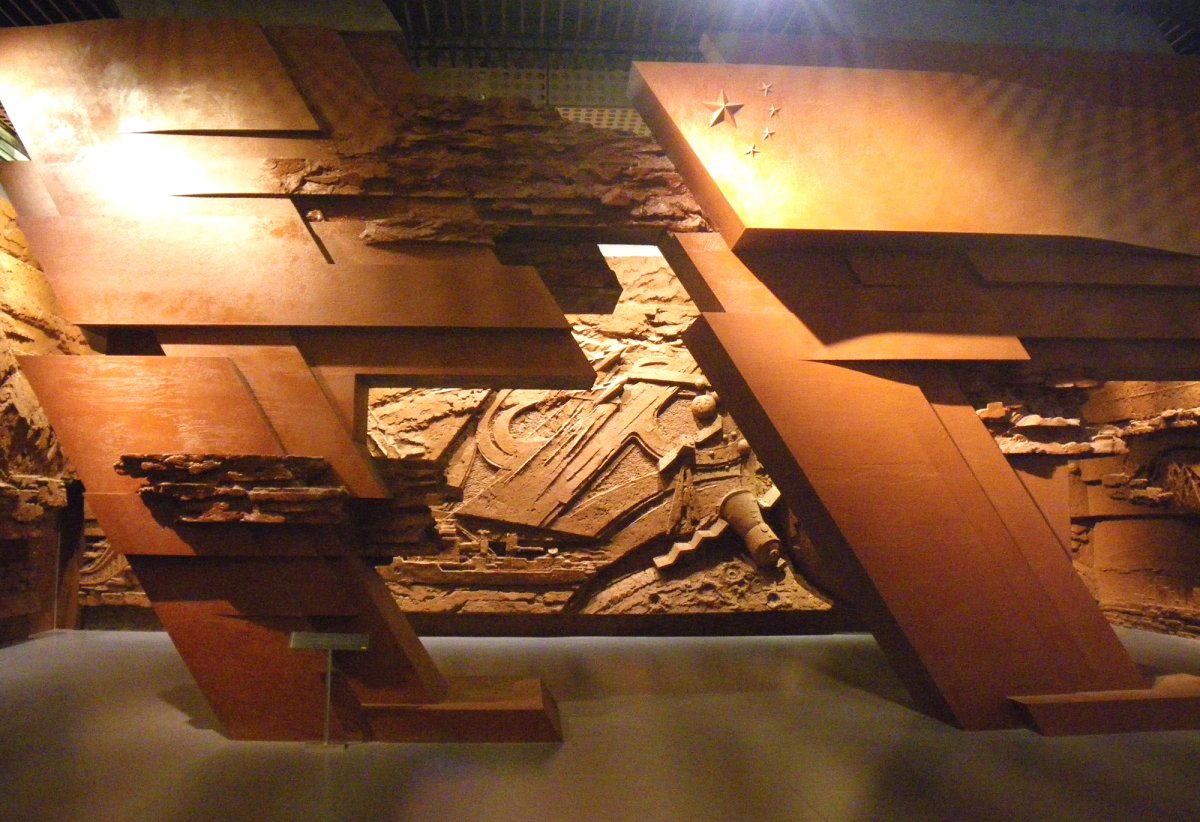
The “For the Great Revival of the Chinese People” sculpture (foreground) and the Contemporary Resplendence mural (background). Photo by Kirk Denton, Nov. 2011.
The juxtaposition of the two murals suggests that what is being “revived” in China today is the greatness and ancient glory of China’s past lost to Western and Japanese imperialism. The restoration of Confucianism—an ethical, social, and political philosophy associated with Confucius (551-479 BCE) that often served to buttress imperial rule by emphasizing concepts of loyalty and filial piety—both in Party and popular discourse, parallels this revisionist view of the imperial past.
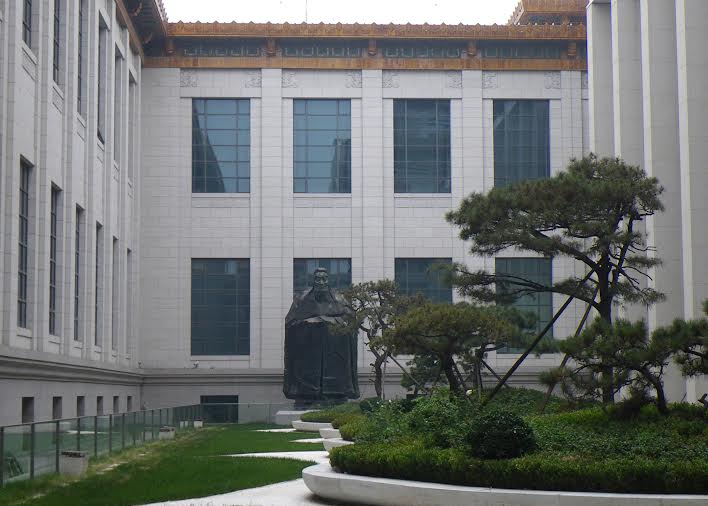
Sculpture of Confucius in the outdoor courtyard of the National Museum of China. Photo by Kirk Denton, Nov. 2011.
The National Museum of China brings together what were, in the museum’s earlier phase, two separate museums, one that deals with the imperial past and one on modern history. Now the museum-goer can stroll seamlessly from the Ancient China exhibit, which glorifies the imperial past, right into the Road to Revival exhibit.
History museums in many other parts of the world tell stories that whitewash the past and remove from it uncomfortable elements that do not sit well with the political status quo in the present. But the Road to Revival exhibit is particularly egregious in displaying a standard Party line on the meaning of the past.
Though the endpoint has shifted from Maoist “socialism” to the “socialist market economy,” the basic parameters of the narrative remain largely the same. The promise of a more confident historical narrative that confronts uncomfortable facets of the Maoist past and Chinese neoliberal present are clearly not fulfilled in the exhibit.
It should be said that in some other museums—say, the Shanghai Municipal History Museum—radically new historical narratives have replaced the tired Maoist tropes of imperialist oppression and national liberation. However, they also whitewash the past of its trauma.
But the National Museum of China, a cultural institution that is directly under the auspices of the Ministry of Culture and therefore subject to review by a number of central CCP offices, is simply too close to the core of Party power to allow curators leeway to redefine the nature of historical representation.
National Dreams versus Personal Dreams
In giving his first China Dream speech in the Road to Revival exhibit—standing before photographs of Deng Xiaoping and a placard that reads “Taking the Path of Socialism with Chinese Characteristics”—Xi Jinping suggested that the formulation of dreams in the present and their realization in the future are predicated on overcoming the past.
China’s revival can only occur once that past, especially the “century of humiliation” during which China was cajoled by Western and Japanese imperialists, has been fully and properly put behind it. It is the story of that past and the overcoming that is narrated in Road to Revival.
The view of modern Chinese history presented at the National Museum of China may be retrograde and propagandistic, but that doesn’t mean we should ignore or dismiss it.
That the history of imperialism is still viewed as a burden to China’s emergence on the world scene, for instance, helps explain China’s recent provocations over the Diaoyu Islands and the South China Sea with its Asian neighbors.
It also reflects a longstanding proclivity to use historical narratives as a tool for political legitimization that is as much a product of the Confucian tradition as it is of Marxism-Leninism.
China is becoming an increasingly liberal society, but it is naïve to expect the CCP to embrace a pluralistic view of history—the kind that is sometimes found in state museums in democratic Taiwan.
The idea that the past can be viewed from multiple angles and that various communities in the present have vested interests in the past is, of course, one that is foreign to the political culture of a single-party state, especially one that has now explicitly embraced a Confucian ethical discourse of social harmony and loyalism. Such a state speaks for those communities and is loath to allow them to speak for themselves.
Herein lies the obvious difference between the China Dream and its American counterpart.
“History tells us,” says Xi Jinping, “that the future fate of every person is intimately intertwined with the future fate of this country and the future fate of this people. If the country and the people are doing well, then everyone will do well.”
The revival of the Chinese people and the Chinese nation depicted in Road to Revival is mounted as a backdrop for the realization of the individual dreams of the Chinese people today and in the future.
Chinese citizens are told: your personal success is not just something you earn by dint of hard work and ingenuity; it is built on the foundation of a shared history—ancient glory, imperialist humiliation, and national revival—and can come to you only when the nation itself has arrived.
The personal dreams of Chinese today are fueled by mass media, which hype wealth, entrepreneurship, and love. Popular films such as Tiny Times propagate an ideology of personal happiness achieved through career, friendship, and love, avenues that would seem to have little connection to the nation.
In an era when young people don’t know or care much about history, the China Dream is perhaps a desperate attempt to make the nation and the CCP matter. To tie personal dreams to the “great revival of the Chinese people,” a phrase Xi uses seven times in his short speech, is to reinsert the Chinese people into a narrative of modern history in which the CCP is the main protagonist.
Many in China mock the very notion of the China Dream or are cynical about the possibility of fulfilling their own personal dreams in a society that doesn’t seem to care about them.
In a recent op-ed piece for The New York Times, the writer Yu Hua tells the story of a friend whose life-long dream has been to vote in an election. Yu Hua concludes that the China Dream should be all “dreams dreamed in China,” even if those dreams—such as the dream of participating in an election—fit poorly with Xi’s dream of national renewal.
But the term China Dream may indeed prove to be an effective marketing device for the Party because it is malleable and multidimensional enough to mean something to everyone.
Like its American counterpart, it is optimistic about the future and draws on powerful narratives about the past. It also suggests that you can have your cake and eat it too—that is, you can both pursue your personal dreams and at the same time contribute to the national dream.
In this respect, it is different from Mao-era collectivism, in which the individual subsumed his or her personal desires into those of the group.
Getting individuals to buy into the China Dream means ridding the past and present of its trauma and tragedy and forging a happy, sanguine story of revival and arrival.
Xi Jinping’s speech is also a recognition that the future of the CCP rests on making individuals happy and wealthy. This is the deal with the devil that the Chinese people make with the CCP.
But what will happen if the party fails to fulfill the dreams of China’s people to enter middle-class consumer heaven?

Exhibiting the Past: Historical Memory and the Politics of Museums in Postsocialist China
(University of Hawaii Press, 2014)
Brady, Anne-Marie. 2008. Marketing Dictatorship: Propaganda and Thought Work in Contemporary China. Lanham, Md.: Rowman & Littlefield, 2008.
Denton, Kirk A. Exhibiting the Past: Historical Memory and the Politics of Museums in Postsocialist China. Honolulu: University of Hawaii Press, 2014.
Gries, Peter. China’s New Nationalism: Pride, Politics, and Diplomacy. Berkeley: University of California Press, 2004.
Hung, Chang-tai. Mao’s New World: Political Culture in the Early People’s Republic. Ithaca, N.Y.: Cornell University Press, 2011.
Lim, Louisa. The People's Republic of Amnesia: Tiananmen Revisted. New York: Oxford University Press, 2014
Lovell, Julia. 2009. “It’s Just History: Patriotic Education in the PRC.” The China Beat, April 22. http://thechinabeat .blogspot.com/2009/04/its-just-history-patriotic-education-in.html.
Matten, Marc Andre, ed., Places of Memory in China: History, Politics, and Identity. Leiden: Brill, 2012.
Varutti, Marzia. Museums in China: The Politics of Representation after Mao. Suffolk, UK: Boydell Press, 2014.
Watson, Rubie. “Palaces, Museums, and Squares: Chinese National Spaces.” Museum Anthropology 19, no. 2 (1995): 7–19.
Wu, Hong. Remaking Beijing: Tiananmen Square and the Creation of a Political Space. Chicago: University of Chicago Press, 2005.
Yang, Guobin Ching Kwan Lee, eds., Reinvisioning the Chinese Revolution: The Politics and Poetics of Collective Memories in Reform China. Washington: Wilson Center Press, 2007.

